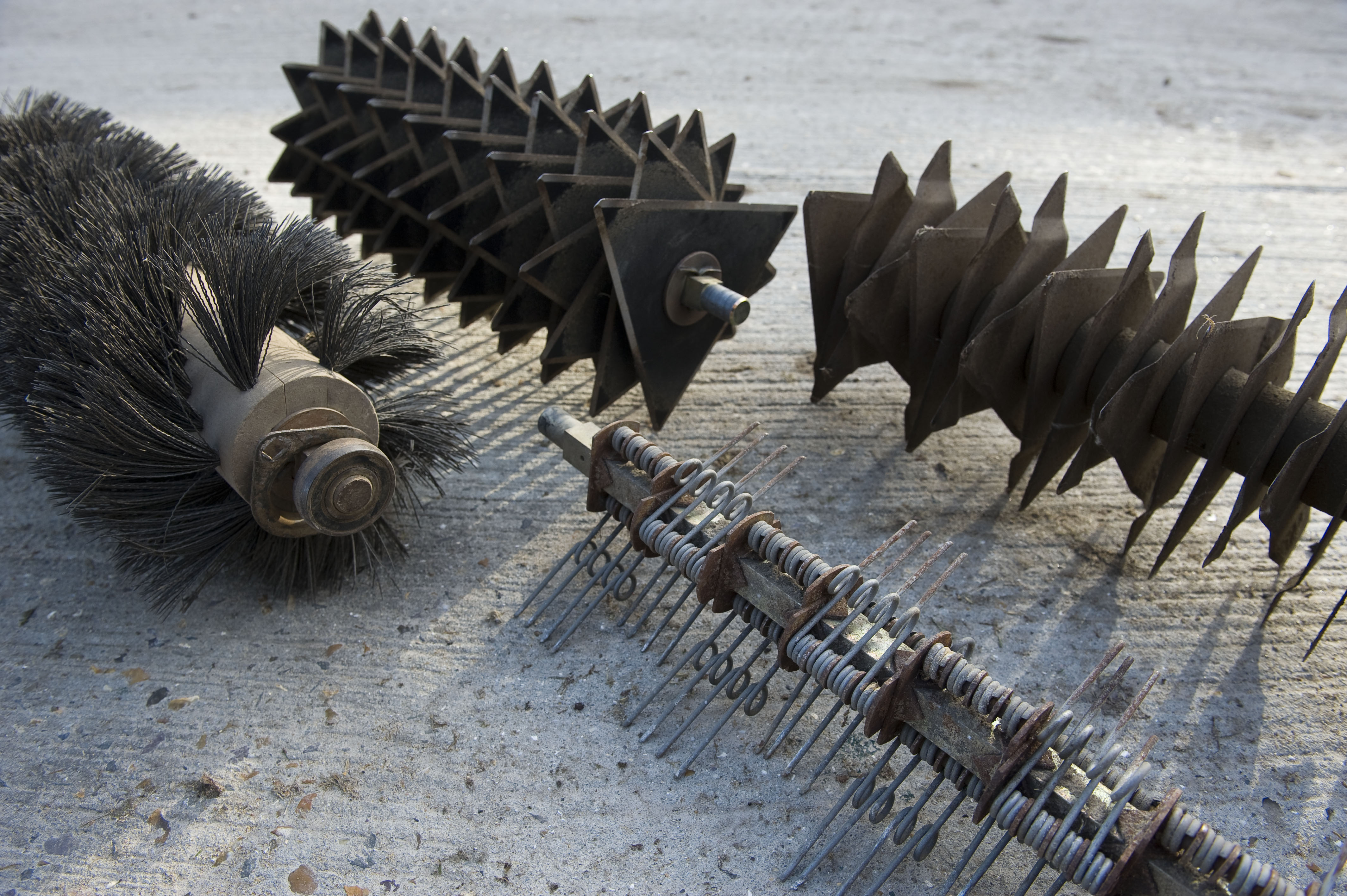What is verticutting?
Verticutting is the process of cutting the grass plant with vertically orientated blades. This means that the ‘width’ rather than the ‘height’ of the plant is trimmed.
Verticutting is different from scarification because the blade does not enter the soil – it is therefore less disruptive and will not cause pitch cracking, which can happen with scarification.
What are the benefits of verticutting?
Verticutting can help to improve the quality of the sward and the performance of pitches. By trimming horizontal growth, inter-plant competition is reduced, maintaining a higher plant density and, over time, reducing the bare areas that appear as grass cut height is lowered. These bare areas can cause ‘two-paced’ pitches (where the ball landing on the soil patch comes off the pitch at a different pace and angle from a ball landing on a grass plant). Verticutting also helps to control grass plant seed heads by removing them, but if done when the plant is at the start of drought stress can actually encourage seed head production.
Verticutting also helps to prevent the accumulation of plant ‘litter’, that if not removed will eventually create thatch.
Verticutting the square is only required periodically during the growing season – it is not an ‘every week’ task and whilst useful it is not essential for pitch preparation – you can prepare pitches safely without it. It is a technique that can help to produce the best pitches but if your budget is limited you can manage without it.
One of the advantages of verticutting is that it can speed up the preparation of pitches because less thinning out is required (see the Pitch Preparation section). Excessive verticutting can thin the sward too much so that the square becomes susceptible to wear and annual meadow grass (Poa annua) which is an undesirable grass species.
What equipment is used?
Verticutters are occasionally dedicated machines but are more commonly either specific verticutting reels fitted to scarifiers (whether pedestrian or tractor-mounted) or verticutting reels that can be fitted to some makes of cylinder mower. The blades on verticutting reels are typically thinner and more closely spaced than scarifying reels to reflect plant spacing and because less torque is required to cut through grass than soil.
The golden rule when verticutting is to make sure the tips of the blades are set above the soil surface. They are typically set 1-2 mm above the surface (you will need to set higher than this if your square is not smooth or you have large saddles). Verticutting too low can result in severe de-foliation.
How frequently should I Verticut?
Squares are typically Verticut a couple of times in pre-season preparation and then may be Verticut on a monthly basis, or slightly more frequently during periods of strong growth. You can experiment to find out what suits your square and the types of grasses in your square.
Be aware that verticutting too frequently can encourage annual meadow grass plants to produce seed heads under stress which can exacerbate annual meadow grass content.
Benefits
- More vertical grass growth which helps performance and presentation.
- Verticutting can help increase the speed of the ball across the square.
- Broadleaf weed control.
- Easier pitch preparation.
- Preventative control against thatch accumulation.
Practical Tips
- Never set the blades too low so that they enter the soil.
- Always check machinery set up before use and trial in an ‘off pitch’ area and certainly not in a pitch in preparation until you are sure it is set properly.
- You can do a couple of passes with the verticutter but remember unlike normal mowing, every pass removes grass material so be careful not to overlap excessively and remember you can always do it again another day rather than over doing it.


 Tweet
Tweet